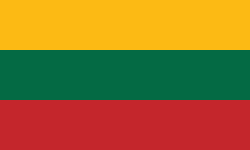Ignalina Nuclear Power Plant (Ignalina Nuclear Power Plant)
The Ignalina Nuclear Power Plant (Ignalinos atominė elektrinė, IAE) is a decommissioned two-unit RBMK-1500 nuclear power station in Visaginas Municipality, Lithuania. It was named after the nearby city of Ignalina. Due to the plant's similarities to the infamous Chernobyl Nuclear Power Plant in both reactor design and lack of a robust containment building, Lithuania agreed to close the plant as part of its accession agreement to the European Union. Unit 1 was closed in December 2004; Unit 2, which counted for 25% of Lithuania's electricity generating capacity and supplied about 70% of Lithuania's electrical demand, was closed on December 31, 2009. Proposals have been made to construct a new nuclear power plant at the same site, but plans have not materialised since then.
The Ignalina Nuclear Power Plant contained two Soviet-designed RBMK-1500 water-cooled graphite-moderated channel-type power reactors. After the Chernobyl disaster of April 1986, the reactor was de-rated to 1,360 MW. Each unit of the power plant was equipped with two K-750-65/3000 turbines with 800 MW generators.
The Ignalina Nuclear Power Plant contained two Soviet-designed RBMK-1500 water-cooled graphite-moderated channel-type power reactors. After the Chernobyl disaster of April 1986, the reactor was de-rated to 1,360 MW. Each unit of the power plant was equipped with two K-750-65/3000 turbines with 800 MW generators.
Map - Ignalina Nuclear Power Plant (Ignalina Nuclear Power Plant)
Map
Country - Lithuanian_Soviet_Socialist_Republic_(1918–1919)
 |
 |
| Flag of Lithuania | |
Germany had lost World War I and signed the Compiègne Armistice on 11 November 1918. Its military forces then started retreating from the former Ober Ost territories. Two days later, the government of the Soviet Russia renounced the Treaty of Brest-Litovsk, which had assured Lithuania's independence. Soviet forces then launched a westward offensive against Estonia, Latvia, Lithuania, Poland and Ukraine in an effort to spread the global proletarian revolution and replace national independence movements with Soviet republics. Their forces followed retreating German troops and reached Lithuania by the end of December 1918.
Currency / Language
| ISO | Currency | Symbol | Significant figures |
|---|---|---|---|
| EUR | Euro | € | 2 |
| ISO | Language |
|---|---|
| LT | Lithuanian language |
| PL | Polish language |
| RU | Russian language |















